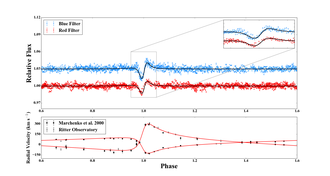
BRIght Target Explorer (BRITE) Constellation is the first nanosatellite mission applied to astrophysicalresearch. The BRITE mission consists of six practically identical nanosatellites - cubes of 20 x 20 x 20 cm - that are designed to obtain accurate measurements of the light radiated by the brightest stars in the sky. The satellites were built by a consortium in three partner countries, Austria, Canada, and Poland, two in each country. They were launched into orbit between February 2013 and August 2014. The Polish BRITEs are named Lem and Heweliusz and are the first Polish scientific satellites.
To date, 350 stars have been observed for a duration of up to half a year each. The main aim of the mission is to study variability in the light output of bright stars of high mass. This variability is caused by physical processes in the star, which can therefore be studied and constrained. In this way, knowledge about the interior structure of the stars, but also their rate of rotation, the presence and effects of binary companions, circumstellar material etc. can be obtained. Due to the high quality of these measurements, as they are taken outside of the Earth's atmosphere, first results that would not be obtainable otherwise, have been secured. To name just a few examples, these comprise the discovery of a large number of oscillations of the components of the binary star Beta Centauri (A&A 588, A55 (2016)), the discovery of the interference between stellar pulsations triggering mass loss in the Be star Nu Centauri (A&A 588, A56 (2016)), and the detection of a rich spectrum of gravity-driven oscillations in the mostly pressure-driven pulsator Nu Eridani (2017MNRAS.464.2249H).
A very recent new result from BRITE is the discovery of massive heartbeat stars, a class of close binaries in eccentric orbits that show brightening events near periastron. So far, the Kepler mission has discovered about two dozens of such objects, all having masses less than twice that of our Sun. BRITE has revealed three massive representatives, among them Iota Orionis that consists of stars 23 and 13 times the Sun's mass, respectively (Pablo et al., submitted to MNRAS). The figure (courtesy Bert Pablo, University of Montreal) shows the binary solution of Iota Ori. In the top panel are the phase-folded BRITE red filter light curve (red) and BRITE blue filter light curve (cyan) overlaid with a model fit (black). The bottom panel shows published radial velocity data from Marchenko et al. (2000) (black x) and new Ritter Observatory measurements (black dots) overlaid with the model fit in red. In the BRITE light curves one can also discern some wiggles in phase with the orbital light variations. These are stellar oscillations excited by tides - the first such finding for a star as massive as Iota Orionis.
This example highlights that BRITE-Constellation lives up to its expectations - but the most interesting results are (hopefully) still yet to come.
The Copernicus Astronomical Center is a part of the BRITE Consortium.
(Text: Gerald Handler, Copernicus Astronomical Center, Warsaw)






